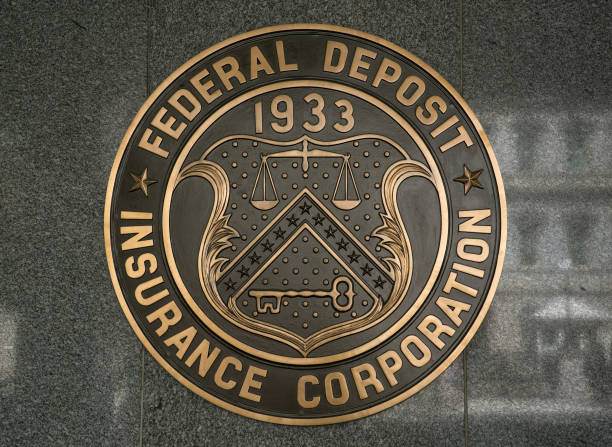
|
|
You might be using an unsupported or outdated browser. To get the best possible experience please use the latest version of Chrome, Firefox, Safari, or Microsoft Edge to view this website. |

You see the FDIC acronym displayed in most banks and accented on banking products. You’ve been told to look out for the FDIC logo as a sign of security. And you know that if you don’t see its logo, your money may be at risk.
To help you understand your relationship with the FDIC better, here are four key facts you need to know.
What is the FDIC?
The Federal Deposit Insurance Corporation is an independent agency of the federal government that insures bank deposits up to $250,000. It insures checking accounts, savings accounts, money market deposit accounts and certificates of deposits.
The FDIC was created in 1933 to help foster more trust between consumers and financial institutions. In the aftermath of the stock market crash of 1929, thousands of banks failed. Scared of losing their money, bank customers pulled money out of banks. This led President Franklin D. Roosevelt to declare a 4-day bank holiday in March 1933. In June of that year, President Roosevelt signed into law the Banking Act of 1933 (more popularly known as Glass-Steagall Act), which in part created the FDIC.
It proudly proclaims that consumers have not lost a penny of their FDIC-insured funds since it was founded.
When Does The FDIC Protect You?
The FDIC launches into action when an insured financial institution fails. When a bank goes on the fritz and is unable to repay the deposits of its customers, the FDIC does a few things. The first action is to notify the customers and the public of the bank’s closure. The second is to make sure depositors are protected up to the insurance limits. It does this in one of two ways.
In most cases, the FDIC works with a healthy bank to assume the insured deposits of the failed financial institution. If this option isn’t available, the FDIC will pay depositors directly.
How Does The Coverage Work?
Each depositor is insured per insured bank and per ownership category. Ownership categories include accounts owned by one person (called “single accounts”), accounts owned by two or more people (called “joint accounts”), certain retirement accounts, revocable and irrevocable trusts and employee benefit plan accounts.
The following table lists accounts that are covered and examples of accounts that are not covered by FDIC insurance.
| Insured Accounts | Accounts Not Covered |
|
|
All your accounts at one insured bank that are in the same ownership category are covered up to a total of $250,000. For example, if you have a checking account, a savings account and multiple CDs at one bank that are owned by you, they are all covered under one insurance limit because they fall under one ownership category as single accounts. As described by the FDIC: “All single accounts owned by the same person at the same bank are added together and insured up to $250,000.”
If you then had a joint account at the same bank, you’d receive another $250,000 coverage limit for half of the funds in that account. And if you have assets in another insured bank, your money would be covered up to the insurance limit per ownership category at that bank.
What Tools Does The FDIC Offer To Consumers?
The FDIC has helpful resources for consumers. Whether you’ve suffered a bank closure or maybe you’re just curious about your insurance, it’s got your questions covered.
- List of Failed Banks: https://www.fdic.gov/bank/individual/failed/banklist.html
- Insured Bank Finder: https://research.fdic.gov/bankfind/
- Calculate Your Deposit Insurance: https://www5.fdic.gov/edie/calculator.html
- Submit a Complaint: https://www.fdic.gov/consumers/assistance/filecomplaint.html

